Micky Van de Ven and William Saliba have transformed how Tottenham and Arsenal play – here is how
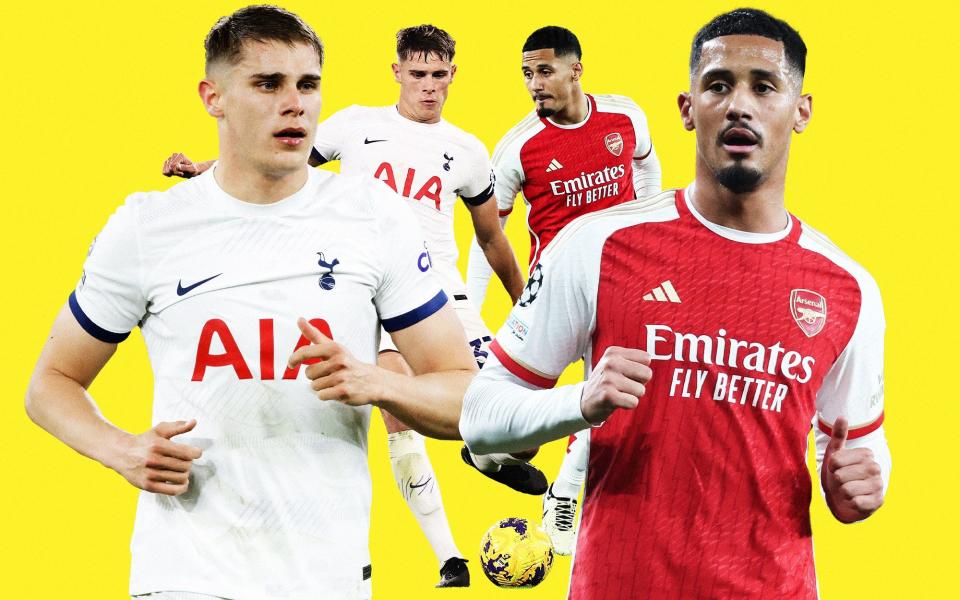
One of football’s core beliefs is that pace is a defender’s greatest fear. Speed kills, as they say. But is that really still the case in the modern game? These days, in a growing number of cases, pace is no longer the biggest concern for centre-backs. Instead, it is their biggest asset.
Sunday’s north London derby will provide the perfect snapshot of this evolution. On the white side, Tottenham Hotspur have Micky van de Ven, statistically the quickest player in the Premier League. On the red side, Arsenal have William Saliba, a giant of a man who moves like a sprinter.
Historically, the fastest players have been forwards. But for Arsenal and Spurs this weekend, the fastest players are centre-backs. Pace has become one of the most important attributes for defenders, and Van de Ven and Saliba’s speed makes them as the most transformative players in their respective teams.
This shift is a consequence, primarily, of the tactical changes in football. High pressing is the preferred defensive approach for most of the leading teams now, and high pressing requires a high defensive line. To take such an approach, managers need players who are as comfortable running back towards their own area as they are facing the opponent’s goal.
The likes of Arsenal, Spurs, Manchester City and Liverpool want to push as far up the pitch as possible, squeezing the opponent. For Arsenal and Spurs, this is made possible by the physical abilities of Saliba and Van de Ven.
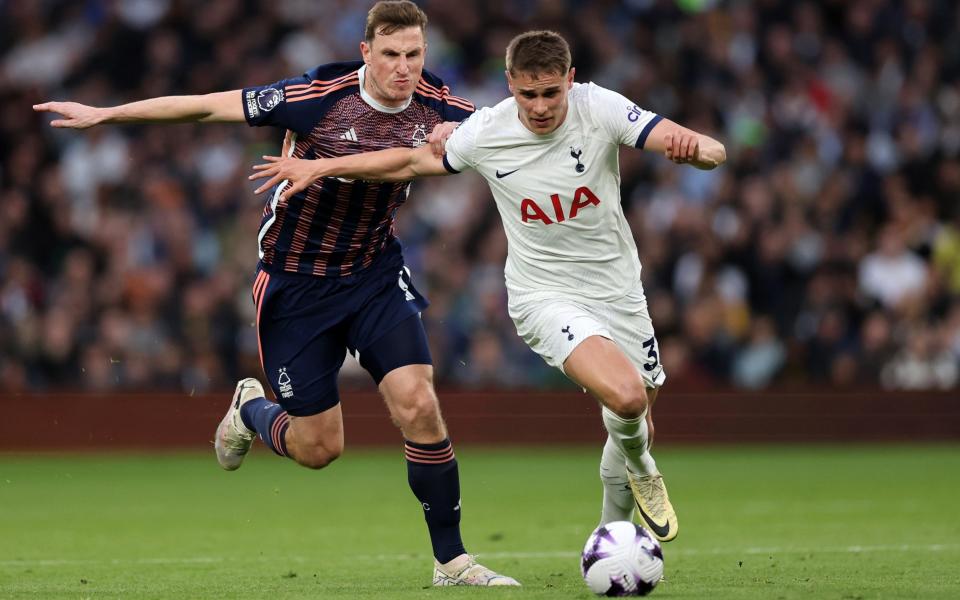
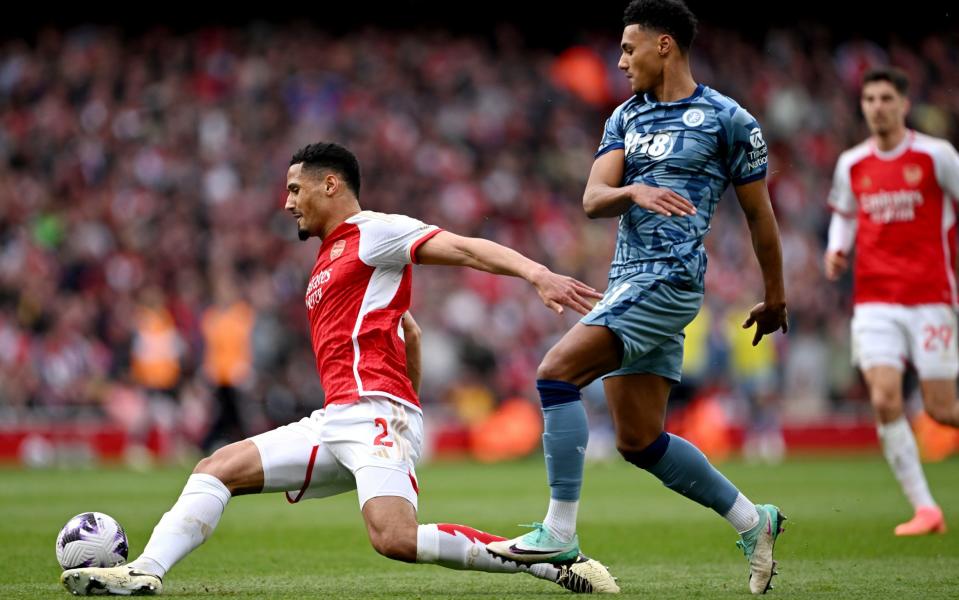
At both clubs, there has been an enormous difference when these two players have been absent. Last season, Arsenal’s title charge collapsed after Saliba was injured in March. This season, the Frenchman has played every minute of the league campaign so far – and Arsenal have the best defensive record in the division.
Spurs, meanwhile, have lost five of the 11 league matches that Van de Ven has not started this season. With him in the starting line-up, they have lost just three of 21 league matches.
Clearly, Ange Postecoglou’s high line is significantly less effective without the blistering recovery pace of Van de Ven, who earlier this season became the fastest player recorded in the Premier League. Against Brentford in January, the Dutchman was clocked at 37.38km/h. Just how fast is that? Well, when Usain Bolt set the 100m world record in 2009, his average speed was 37.58km/h.
The previous highest speed clocked by a Premier League player was also registered by a defender: City’s Kyle Walker. In recent years, so much of City’s defensive success has been built on Walker’s ability to sweep up counter-attacks.
For Postecoglou, Van de Ven’s speed of foot has allowed him to impose a strategy which is far more aggressive than anything produced in previous years under Antonio Conte. On average this season, the Spurs defensive line starts 44m from their own goal, which is a significant jump up from 40m last season.
These two images, both from north London derbies at the Emirates Stadium, and both taken when Arsenal’s Oleksandr Zinchenko has the ball in the centre-circle, demonstrate the change at Spurs. The first is from last season, while the second is from earlier this campaign.
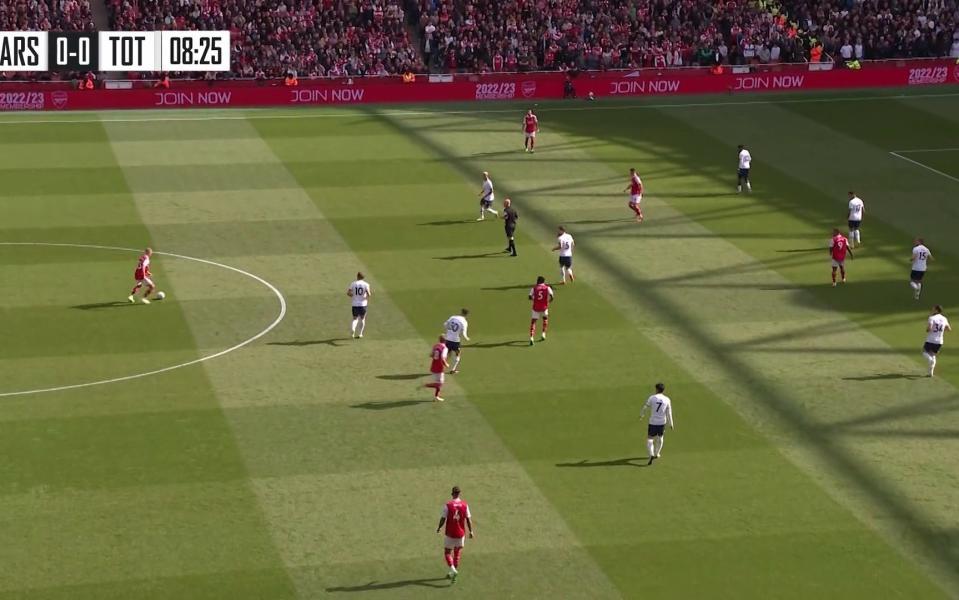
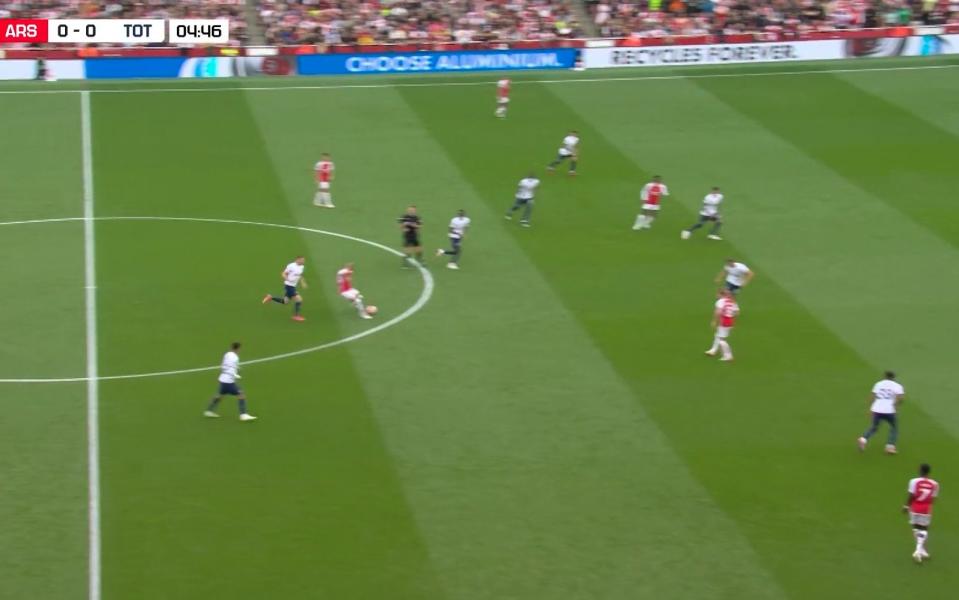
With their higher defensive line, Spurs are able to press further up the pitch with their forwards. On average this season, they allow nine passes per “defensive action”, as it is described by football statisticians. Last year, they allowed 14 passes per defensive action.
At 23, Van de Ven’s potential is enormous. “Micky has been outstanding all year, and he’s growing all the time,” said Postecoglou earlier this season. “The growth in him, his maturity, his physical capacity, there is just no ceiling for that guy.”
They feel the same about Saliba, also 23, at Arsenal. Since the Frenchman came into the team at the start of last season, Mikel Arteta’s defensive line has moved higher and higher.
“It puts more demand [on the defenders] because you see space behind,” said Arteta of his high line. “But the ball normally is further from your goal, so you have a choice to make.
“If you want to defend closer to your six-yard box and have a lot of balls coming in there, or you prefer to have the ball very far [away] and make life more predictable. I think you need the players to feel comfortable with that. Certainly ours are, because they are used to it.”
Few players in the league are as comfortable in these positions as Saliba and Van de Ven. The modern centre-back must be good on the ball, strong in the air and, increasingly, ready to run.
These north London rivals are the forefront of a new generation of defenders, and Sunday’s derby could be decided by which of them best performs their role.
Recommended
How each of the 'big six' press – and why Man Utd are useless at it

